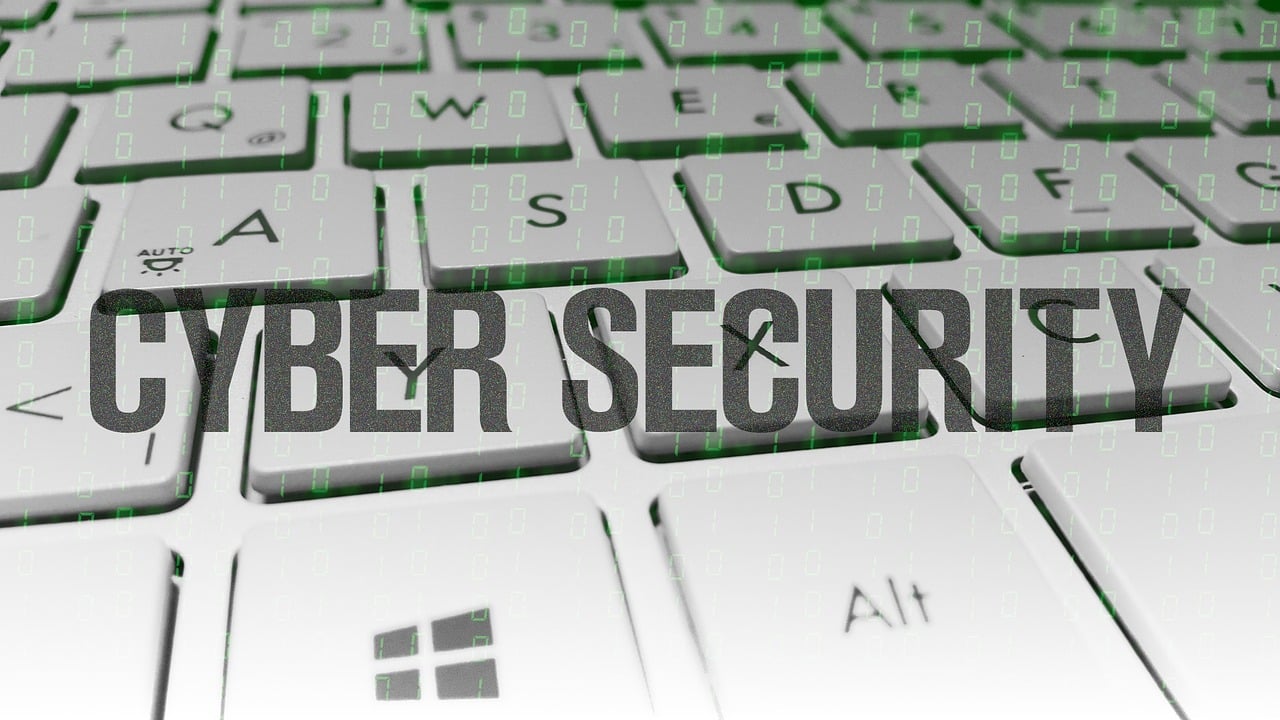What Types Of Security Measures Do IT Service Providers Implement?
In today’s interconnected digital landscape, ensuring the security of sensitive information is paramount for IT service providers. As businesses increasingly rely on technology for their operations, it becomes crucial to protect against cyber threats and safeguard data. To fulfill this responsibility, IT service providers employ a variety of security measures, such as robust firewalls, encryption protocols, regular vulnerability assessments, and employee training on best security practices. By implementing these measures, IT service providers can offer their clients peace of mind while effectively mitigating potential risks in the ever-evolving world of technology.
Physical Security Measures
Secure Facilities
IT service providers understand the importance of securing their physical facilities to protect their systems and data. They implement various measures to ensure that unauthorized individuals cannot gain physical access to their premises. This can include building access controls such as key cards, biometric scanners, and security guards stationed at entry points. By tightly controlling who can enter their facilities, IT service providers reduce the risk of unauthorized access.
Access Control Systems
Access control systems are essential for ensuring that only authorized individuals can access sensitive areas within an IT service provider’s facilities. These systems use technologies such as key cards, biometric scanners, and PINs to grant access to specific areas. By implementing access control systems, IT service providers reduce the risk of physical breaches and protect their equipment, data centers, and other sensitive areas from unauthorized access.
Video Surveillance
Video surveillance plays a crucial role in physical security measures implemented by IT service providers. By strategically placing cameras throughout their facilities, IT service providers can monitor and record activities in real-time. This allows them to identify any suspicious behavior or potential security breaches. The footage can also serve as evidence in investigations and help deter individuals from engaging in unauthorized activities.
Security Guards
Having trained security guards on-site is another important physical security measure implemented by IT service providers. These guards provide a visible presence and contribute to a safe and secure environment. They monitor access points, patrol the premises, and respond to any security incidents or emergencies that may arise. Security guards are trained to handle various situations, including identifying and mitigating potential threats.
Network Security Measures
Firewalls
Firewalls form the first line of defense in network security. They monitor and control incoming and outgoing network traffic based on pre-established security policies. IT service providers implement firewalls to protect their networks from unauthorized access, malware, and other malicious activities. Firewalls can be either hardware-based or software-based, and they help prevent unauthorized access to sensitive data and resources.
Intrusion Detection Systems
Intrusion Detection Systems (IDS) are designed to detect and respond to unauthorized activity within a network. IT service providers deploy IDS to continuously monitor network traffic and identify any suspicious or malicious behavior. When an IDS detects a potential security breach, it generates alerts to notify network administrators, allowing them to take immediate action to mitigate the threat. IDS play a vital role in ensuring the integrity and security of IT service providers’ networks.
Virtual Private Networks
Virtual Private Networks (VPNs) provide secure and encrypted connections between remote users and an IT service provider’s network. They are commonly used by IT service providers to enable secure remote access for their employees and clients. VPNs create a secure tunnel through which data can be transmitted, protecting it from interception or compromise. By implementing VPNs, IT service providers ensure that sensitive information remains secure, even when accessed remotely.
Secure Wi-Fi Networks
Wi-Fi networks are a common entry point for many security breaches. IT service providers, therefore, implement secure Wi-Fi networks to protect against unauthorized access. They use encryption protocols such as Wi-Fi Protected Access 2 (WPA2) or higher to secure wireless connections. Additionally, strong passwords, regular password changes, and disabling default settings contribute to the security of Wi-Fi networks. By implementing these measures, IT service providers minimize the risk of unauthorized access to their network resources.
Network Traffic Monitoring
Network traffic monitoring involves continuously monitoring network activity to identify any suspicious or malicious behavior. IT service providers use monitoring tools to capture and analyze network traffic data. This helps them identify anomalies, detect potential security breaches, and respond promptly to mitigate any threats. Network traffic monitoring is an essential security measure that allows IT service providers to maintain the integrity and availability of their networks.
Data Security Measures
Encryption
Encryption is a crucial data security measure employed by IT service providers to protect sensitive information from unauthorized access. IT service providers use encryption algorithms to convert data into an unreadable format, which can only be accessed by authorized individuals. Encryption ensures that even if data is intercepted, it remains secure and private. IT service providers employ encryption techniques at various levels, including data transfer, storage, and communication, to safeguard their clients’ sensitive information.
Backup and Disaster Recovery
IT service providers prioritize data backup and disaster recovery as part of their data security measures. Regularly backing up data ensures that it can be restored in case of data loss due to hardware failure, human error, or cyberattacks. Moreover, IT service providers develop comprehensive disaster recovery plans to minimize the impact of unforeseen events, such as natural disasters or system failures. By implementing robust backup and disaster recovery strategies, IT service providers ensure the availability and integrity of their clients’ data.
Endpoint Security
Endpoint security focuses on securing individual devices, such as laptops, desktops, and mobile devices, that connect to an IT service provider’s network. IT service providers implement endpoint security measures, such as antivirus software, anti-malware solutions, and device encryption, to protect against threats originating from the endpoints. These measures prevent unauthorized access, data breaches, and the introduction of malware or other malicious software into the network.
Data Loss Prevention
Data loss prevention (DLP) is a proactive approach to data security aimed at identifying, monitoring, and protecting sensitive data from unauthorized access, use, or disclosure. IT service providers employ DLP solutions to prevent data breaches and ensure compliance with data protection regulations. These solutions can classify, track, and control sensitive data, preventing its unauthorized transmission or storage. By implementing DLP measures, IT service providers minimize the risk of data leakage and protect clients’ sensitive information.
Secure File Transfer
Secure file transfer protocols are used by IT service providers to protect sensitive data during transit. Protocols such as Secure File Transfer Protocol (SFTP) and Secure Shell (SSH) provide encrypted channels for transferring files securely. By implementing secure file transfer mechanisms, IT service providers ensure the confidentiality and integrity of data exchanged between systems, mitigating the risk of unauthorized access or data interception.
Authentication and Authorization Measures
Strong Password Policies
Strong password policies are an essential aspect of authentication and authorization measures. IT service providers enforce password policies that require users to create strong, unique passwords. These policies often include guidelines for password complexity, regular password changes, and restrictions on password reuse. By ensuring that passwords are robust and not easily guessable, IT service providers reduce the risk of unauthorized access to systems and data.
Multi-Factor Authentication
Multi-factor authentication (MFA) adds an extra layer of security to the authentication process. IT service providers implement MFA by requiring users to provide multiple different types of credentials to access systems or data. This can include a combination of passwords, biometric data (e.g., fingerprints or facial recognition), or hardware tokens. By implementing MFA, IT service providers significantly enhance the security of their systems, as an attacker would need to bypass multiple authentication factors to gain access.
User Access Controls
User access controls enable IT service providers to manage and control user privileges and access rights within their systems. Through user access control policies, IT service providers restrict access to sensitive data and resources to only authorized individuals. They assign specific user roles and permissions based on the principle of least privilege, ensuring that users can only access what is necessary for their job functions. User access controls help prevent unauthorized access and minimize the risk of data breaches.
Role-Based Access Controls
Role-based access controls (RBAC) are an effective way to manage and enforce user access policies. IT service providers implement RBAC by assigning roles to users based on their job functions and responsibilities. Each role is associated with specific access privileges and permissions. RBAC helps IT service providers streamline access management, reduce the risk of unauthorized access, and ensure that users have the necessary permissions to perform their duties effectively.
Security Audits and Assessments
Regular Security Audits
Regular security audits are an important part of IT service providers’ security measures. These audits assess the effectiveness of security controls, policies, and procedures in place. IT service providers conduct internal or external audits to identify vulnerabilities, gaps, or weaknesses in their security posture. By conducting regular security audits, IT service providers can proactively address security issues, implement necessary improvements, and ensure compliance with industry standards and regulations.
Vulnerability Assessments
Vulnerability assessments help IT service providers identify and prioritize potential vulnerabilities within their systems and networks. These assessments involve scanning and testing networks, applications, and infrastructure for known vulnerabilities. By identifying vulnerabilities before they can be exploited by attackers, IT service providers can take proactive measures to address and mitigate the identified risks. Regular vulnerability assessments are a critical component of IT service providers’ security practices.
Penetration Testing
Penetration testing, also known as ethical hacking, involves simulating real-world attacks on an IT service provider’s systems and networks. Qualified professionals attempt to exploit vulnerabilities to assess the effectiveness of security controls and identify any weaknesses. Penetration testing provides IT service providers with valuable insights into their security posture and helps validate the effectiveness of their security measures. By conducting periodic penetration tests, IT service providers can identify and address potential vulnerabilities before they can be exploited maliciously.
Incident Response and Management
Security Incident Response Plans
Security incident response plans outline the procedures and steps to be followed in the event of a security incident or breach. IT service providers develop comprehensive incident response plans to ensure a swift and effective response to security incidents. These plans typically include incident detection, containment, eradication, recovery, and lessons learned. By having well-defined incident response plans, IT service providers can minimize the impact of security incidents, reduce downtime, and protect their clients’ data and systems.
24/7 Monitoring and Alerting
Continuous monitoring and alerting are critical aspects of incident response and management. IT service providers deploy monitoring tools and systems to detect and alert on potential security incidents in real-time. This allows them to respond promptly and mitigate the impact of security breaches. By monitoring network traffic, system logs, and other security events around the clock, IT service providers can identify and address security incidents as they occur, helping to prevent further damage.
Security Information and Event Management (SIEM)
Security Information and Event Management (SIEM) systems collect, analyze, and correlate security event data from various sources within an IT service provider’s network. SIEM solutions provide real-time insight into security events, helping identify potential threats and detect patterns indicative of attacks. By centralizing security event logs and applying advanced analytics, SIEM systems enable IT service providers to proactively monitor networks and respond quickly to security incidents.
Forensic Investigation
Forensic investigation plays a crucial role in incident response, particularly in identifying the root cause of security incidents and gathering evidence for potential legal proceedings. IT service providers employ forensic investigators who are skilled in analyzing and recovering data from compromised systems. These investigators use specialized tools and techniques to reconstruct events, determine the extent of a breach, and identify indicators of compromise. Forensic investigations provide valuable insights into security incidents and help IT service providers strengthen their security measures.
Employee Training and Awareness
Security Awareness Programs
IT service providers understand that their employees play a significant role in protecting systems and data. To ensure a security-conscious culture, they implement security awareness programs to educate employees about potential threats, best practices, and security policies. These programs can include training sessions, workshops, and regular communications to keep employees informed and updated about the latest security threats and preventive measures. By promoting employee awareness, IT service providers enhance their overall security posture.
Phishing Awareness Training
Phishing attacks remain a prevalent threat to organizations. IT service providers conduct phishing awareness training to educate their employees about recognizing and responding to phishing attempts. Through simulated phishing campaigns, employees are trained on how to identify suspicious emails, avoid clicking on malicious links, and report potential phishing incidents. By providing phishing awareness training, IT service providers empower their employees to act as the first line of defense against phishing attacks.
Social Engineering Awareness Training
Social engineering techniques such as impersonation, pretexting, and baiting can be used to manipulate individuals into divulging sensitive information or granting unauthorized access. IT service providers conduct social engineering awareness training to educate their employees about the various tactics employed by attackers. By raising awareness of social engineering techniques, IT service providers equip their employees with the knowledge and skills to recognize and counter such attacks effectively.
Vendor Risk Management
Due Diligence in Vendor Selection
IT service providers implement due diligence processes when selecting vendors or third-party partners. They carefully evaluate and assess the security practices, protocols, and policies of potential vendors. This includes assessing the vendor’s reputation, certifications, compliance with security standards and regulations, and their ability to protect sensitive data and systems. By conducting thorough due diligence, IT service providers minimize the risk of partnering with vendors who may pose security risks.
Vendor Contractual Agreements
Vendor contractual agreements play a critical role in establishing and enforcing security obligations. IT service providers include specific clauses in contracts that outline the expectations and requirements related to security. These clauses may address data protection, security incident reporting, breach response, and compliance with industry standards. By incorporating security requirements into vendor contracts, IT service providers ensure that vendors are held accountable for maintaining the security and privacy of shared data and resources.
Third-Party Security Assessments
In addition to due diligence and contractual agreements, IT service providers may conduct third-party security assessments on their vendors and partners. These assessments involve evaluating the security practices and controls implemented by vendors to protect shared data and resources. By conducting these assessments, IT service providers gain insights into the overall security posture of their vendors, identify potential vulnerabilities, and take appropriate measures to mitigate risks associated with third-party relationships.
Regulatory Compliance
Data Privacy Regulations
IT service providers operate in an environment governed by data privacy regulations, such as the General Data Protection Regulation (GDPR) and the California Consumer Privacy Act (CCPA). Compliance with these regulations is crucial to protect the privacy and security of personal data. IT service providers implement measures to ensure compliance with data privacy regulations, including obtaining necessary consents, implementing privacy policies, and establishing data protection controls. By maintaining regulatory compliance, IT service providers demonstrate their commitment to protecting customer data.
Industry-specific Compliance
In addition to data privacy regulations, IT service providers may also be subject to industry-specific compliance requirements. For example, healthcare providers must comply with the Health Insurance Portability and Accountability Act (HIPAA), while financial institutions must adhere to the Payment Card Industry Data Security Standard (PCI DSS). IT service providers implement security measures and controls specific to their industry to ensure compliance with applicable regulations. Compliance with industry-specific standards is essential for maintaining the trust of clients and protecting sensitive information.
Security Standards and Frameworks
IT service providers often align their security practices with recognized security standards and frameworks, such as the ISO 27001, NIST Cybersecurity Framework, or CIS Controls. These standards provide guidelines and best practices to ensure the confidentiality, integrity, and availability of information and systems. By adhering to these standards, IT service providers demonstrate their commitment to maintaining robust security measures and continuous improvement of their security posture. Compliance with security standards and frameworks enhances trust and provides assurance to clients and stakeholders.
Physical Infrastructure Protection
Redundant Power Systems
IT service providers understand the importance of uninterrupted power supply to maintain the availability of their systems and services. They employ redundant power systems, such as backup generators and uninterruptible power supply (UPS), to ensure continuous power in the event of a power outage. Redundant power systems help minimize downtime, protect against data loss, and ensure that critical operations can continue without interruption.
Uninterruptible Power Supply (UPS)
Uninterruptible Power Supply (UPS) systems serve as a backup power source in case of a power outage or voltage fluctuations. IT service providers utilize UPS systems to provide temporary power until the main power source is restored or until graceful shutdown procedures can be initiated. UPS systems prevent data corruption, equipment damage, and service disruption, ensuring the continuous operation of critical systems and minimizing the impact of power-related issues.
Environmental Monitoring
IT service providers invest in environmental monitoring systems to ensure optimal operating conditions for their equipment. These systems monitor factors such as temperature, humidity, and air quality in data centers and other critical areas. By maintaining appropriate environmental conditions, IT service providers prevent equipment overheating, reduce the risk of hardware failures, and protect their systems from adverse environmental conditions that could impact performance and reliability.
Fire Suppression Systems
To protect their physical infrastructure from fire-related incidents, IT service providers implement advanced fire suppression systems. These systems utilize technologies such as automatic sprinklers, fire alarms, and fire suppression agents to detect and suppress fire outbreaks. By deploying effective fire suppression systems, IT service providers minimize the risk of fire-related damage to their facilities, equipment, and sensitive data.
In conclusion, IT service providers employ a comprehensive set of security measures to protect their systems, data, and physical infrastructure. By implementing physical security measures, network security measures, data security measures, authentication and authorization measures, security audits and assessments, incident response and management protocols, employee training and awareness initiatives, vendor risk management processes, regulatory compliance measures, and physical infrastructure protection strategies, IT service providers create a robust and secure environment for their clients’ data and systems. These measures mitigate the risks of unauthorized access, data breaches, downtime, and other security incidents, ensuring the confidentiality, integrity, and availability of critical information and infrastructure.







